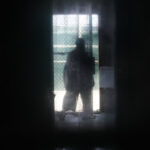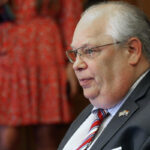
Kindergartners in the United States fell behind on routine childhood vaccinations during the pandemic, the Centers for Disease Control and Prevention reported on Thursday, a slide that experts attributed to skipped checkups and to a groundswell of resistance to Covid-19 shots spilling into unease about other vaccines.
During the 2020-21 school year, about 94 percent of kindergartners had the required vaccines, a drop of roughly one percentage point from the previous school year, the C.D.C. said. That pulled coverage levels below the target of 95 percent, raising fears that life-threatening childhood illnesses like measles could at some point become more prevalent.
“This means there are 35,000 more children in the United States during this time period without documentation of complete vaccination against common diseases,” Dr. Georgina Peacock, the acting director of the C.D.C.’s immunization services division, said at a news conference on Thursday. “This is further evidence of how pandemic-related disruptions to education and health care could have lingering consequences for children.”
Enrollment in kindergarten had also fallen by around 10 percent, Dr. Peacock said, meaning that about 400,000 additional children who had been expected to start school but did not may also have fallen behind on routine vaccinations.
Some states showed dramatic declines in coverage, while others held steadier. Maryland, for instance, reported a roughly 10 percent drop in coverage with the measles, mumps and rubella vaccine from the 2019-20 school year to 2020-21 among kindergartners. Wisconsin, Georgia, Wyoming and Kentucky all reported declines of around 5 percent.
Idaho had among the lowest levels of coverage during the 2020-21 school year with the measles, mumps and rubella vaccine, at 86.5 percent.
The C.D.C. said that coverage had fallen in a majority of states. Virginia, Kansas and Alabama were among a small number of states reporting higher levels of measles, mumps and rubella vaccine coverage during the last school year.
C.D.C. scientists emphasized that extra barriers to reporting vaccination data during the pandemic, including reduced staffing and difficulties collecting information from parents, could also have artificially lowered recorded coverage levels in some places.
Nationally, vaccination coverage fell slightly below 94 percent for the measles, mumps and rubella vaccine; the diphtheria, tetanus and acellular pertussis vaccine; and for the varicella vaccine, the C.D.C. said. The United States had already very nearly lost its status as a country that had eliminated measles in 2019. During that year, the country experienced an unusually high number of measles outbreaks in communities where vaccination levels had dropped.
C.D.C. scientists ascribed the coverage declines in part to missed well-child checkups, which pediatricians said that some families were avoiding during the pandemic out of fear of coming into contact with children with Covid. The agency said that disruptions to schooling, including eased immunization requirements for remote learners and heavy demands on school nurses, could also have contributed to reduced vaccinations.
Pediatricians said in interviews that those issues had also collided with growing levels of anti-vaccine misinformation aimed at the coronavirus shots, which they said had prompted more resistance to ordinary vaccines, too.
“There’s a greater proportion of parents who are questioning routine vaccines,” said Dr. Jason V. Terk, a pediatrician practicing in a suburb of Dallas who also acts as a spokesman for the American Academy of Pediatrics.
“The experience of the pandemic, and the agenda-driven disinformation that has been pushed out relative to Covid vaccines,” he added, had “fed the fire of distrust and skepticism that is really sort of the new pandemic of hesitancy for routine vaccines.”
Public health experts also noted a movement by some state legislatures to create new restrictions around requiring vaccines, though they said that many bills were still pending.
The C.D.C. study did not find evidence of a surge of families seeking exemptions during the pandemic: It said that the percentage of kindergartners with an exemption for one or more required vaccines was 2.2 percent in 2020-21, similar to the figure reported a year earlier.
The agency said that it estimated vaccination coverage based on counts provided by federally funded immunization programs that work with schools and local education departments to examine students’ vaccination and exemption status. It noted that the pandemic had sometimes interfered with efforts to collect and report vaccination data and that national coverage estimates for 2020-21 included only 47 of 50 states and Washington, D.C.
Signs of declining childhood immunization rates had emerged earlier in the pandemic, including reduced vaccine orders from states as part of a federally funded program for uninsured patients.
Dr. Gary Kirkilas, a pediatrician in Phoenix who cares for patients whose families are often poor or homeless, said that conversations about vaccines with the families of children entering kindergarten are often straightforward. After all, he said, the shots needed at that age are often effectively booster doses of vaccines that were administered at younger ages.
But he said that vaccinating children in families that were transient, unused to seeing doctors regularly or distrustful of the medical community required a special level of attention. Skipped well-child checkups during the pandemic exacerbated those problems, Dr. Kirkilas said.
And while one segment of families arrived eager for their children to get vaccines to protect against Covid and other diseases, another was more resistant than ever.
“All the rumblings about vaccines for kids and the misinformation that was going on at the time — that sort of amplified that particular segment of families, where ‘I’m distrustful of the flu vaccine and then I’m also distrustful of the Covid vaccine and maybe I’m starting to be distrustful of vaccines in general,’” he said.
C.D.C. scientists said they were hopeful that the return of in-person schooling would accelerate efforts to catch children up on routine vaccines. They encouraged schools to send reminders to families whose children were behind and said doctors’ offices should alert families that children were due for additional shots.




